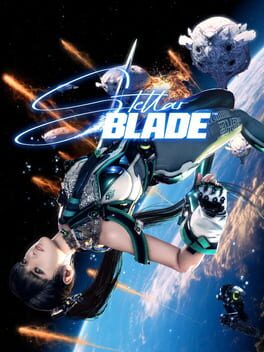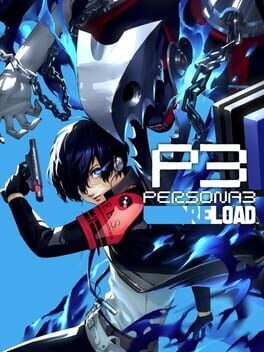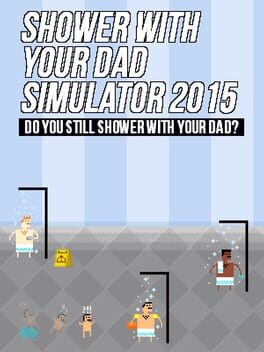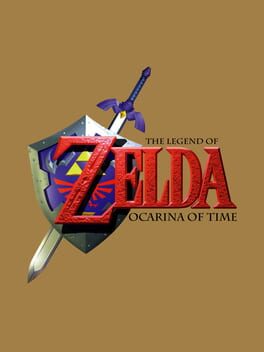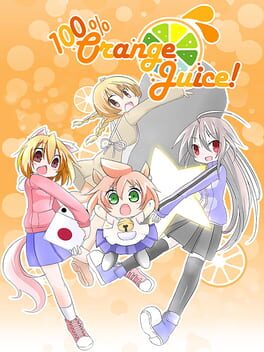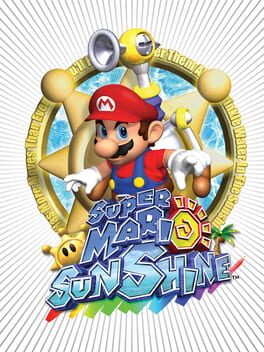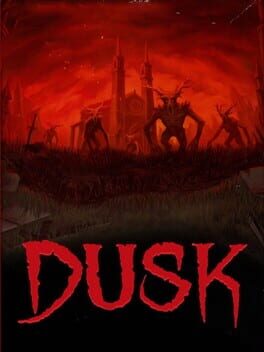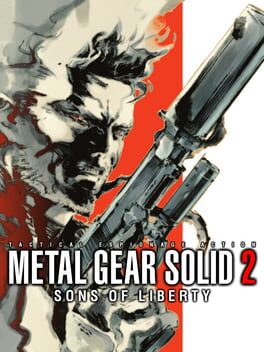Laysketchup
87 reviews liked by Laysketchup
Stellar Blade
2024
Persona 3 Reload
2024
100% Orange Juice
2009
Super Mario Sunshine
2002
Super Mario Sunshine
2002
set aside takes on whether the game is good or whatever. the rating is tied to how much i loved it as a kid, i havent finished replaying and there are more important things to discuss anyway:
mario goes to fucking JAIL. you ever think about that? i mean sit down, and really think about it. i think our society has normalised the fact that mario goes to jail in super mario sunshine. dude literally gets taken to court and handed a sentence. this would NEVER happen in a mario game today. and here it is, in the first 10 minutes. then he has to do community service??? THEY EVEN MADE WANTED POSTERS. i think if you suggested this as a plot for any big nintendo IP you'd get laughed at. can you imagine the next pokemon game starting like this? this game came out in 2002, and truthfully, i am nowhere near old enough to remember people's immediate reactions to it. but i think more games should send their protagonists to jail. ignoring that the plot here is a retread of one of the greatest written games of all time, sonic adventure 2, which came out a year before sunshine, this was a very bold move for the series.
i had to look up the name of the wonderful writer who decided to send mario to jail - makoto wada. interestingly, this is his only writing credit for a mario game (besides 2000's mario artist for the 64DD). can you imagine the state of the mario canon if it was left in his hands? you know those joke games with fake box art with like, "Yoshi Commits Tax Fraud". you ever think about how mario sunshine was officially that, way back?
the rest of the game no doubt delivers on its bizarre premise, as mario is made to clean up psychedelic goop for a good 20 hours, ride a soluble yoshi, become an eel dentist among many other things, before finally topping it off with flipping bowser out of his bathtub. but really, mario sunshine deserves to go down in history as the game that dared send gaming's biggest icon to the slammer.
mario goes to fucking JAIL. you ever think about that? i mean sit down, and really think about it. i think our society has normalised the fact that mario goes to jail in super mario sunshine. dude literally gets taken to court and handed a sentence. this would NEVER happen in a mario game today. and here it is, in the first 10 minutes. then he has to do community service??? THEY EVEN MADE WANTED POSTERS. i think if you suggested this as a plot for any big nintendo IP you'd get laughed at. can you imagine the next pokemon game starting like this? this game came out in 2002, and truthfully, i am nowhere near old enough to remember people's immediate reactions to it. but i think more games should send their protagonists to jail. ignoring that the plot here is a retread of one of the greatest written games of all time, sonic adventure 2, which came out a year before sunshine, this was a very bold move for the series.
i had to look up the name of the wonderful writer who decided to send mario to jail - makoto wada. interestingly, this is his only writing credit for a mario game (besides 2000's mario artist for the 64DD). can you imagine the state of the mario canon if it was left in his hands? you know those joke games with fake box art with like, "Yoshi Commits Tax Fraud". you ever think about how mario sunshine was officially that, way back?
the rest of the game no doubt delivers on its bizarre premise, as mario is made to clean up psychedelic goop for a good 20 hours, ride a soluble yoshi, become an eel dentist among many other things, before finally topping it off with flipping bowser out of his bathtub. but really, mario sunshine deserves to go down in history as the game that dared send gaming's biggest icon to the slammer.
Super Mario Sunshine
2002
to the best of my knowledge, character movement exists within giant state machines dictated by the player input and the properties of any current collision. if you touch a slope, transition to sliding state; if you press the jump button, transition to a jump state unless you're sliding or etc. etc.. in those behind-the-scenes tales of miyamoto meticulously testing mario's movement in low-poly sandboxes during sm64's development, these state transitions and their corresponding kinematics values were the real meat of the tweaks on the programmers' end. "let's make the flip jump transition available even before the turn animation begins, also if mario jumps onto a slope less steep than X degrees maybe we could try giving him a few frames standing or moving to give the player some time to jump again, also if you collide in the air with a slope steeper than X degrees make sure you don't add horizontal momentum when you transition to a slide" these are just ideas off the top of my head and don't represent the actual code, but this is how I conceive of it. the character is a tightly tuned system that functions as a simulacrum of real movement, realistic where our brain wants it and exaggerated where our hands desire it. code with the model ingrained into its logic teeters the line between pretty and messy, and sm64 perhaps got the closest in its era to actually getting somewhere with this system.
sunshine unfortunately lacks this level of polish. mario's main movement feels tighter and more responsive than in the game's predecessor, but at the same time the introduction of fludd and of dynamic object geometry strains whatever was in the previous character state table. accordingly mario feels at his most chaotic in this entry. floating into a slope could result in him suddenly sliding away with no ability for the player to break out of his helplessness, or a rotating platform could cause mario to stutter as the line between "flat" and "slope" becomes blurred. mario will legitimately phase through objects on the rare occasion he doesn't clip in and out or plummet out of the sky having lost his jump. this distinct lack of polish (likely due to the game's rushed development) pervades each aspect of the game.
second-to-second these movement quirks will likely be the most apparent issue to the player, but zooming out reveals level design and structure indicative of the game's troubled history. immediately out of the gate: no star (or rather "shine sprite") requirements, with the first seven shines of each main area now mandatory and the rest completely optional and pointless outside of bragging rights. the seventh shine of each is a brief shadow mario chase that varies little from location-to-location, leaving just the first six of each area as notable challenges. so how do these stack up?
many of these (at least one per world) are obnoxious "secret" stages that steal mario from the sunkissed vista of isle delfino and drop him into gussied-up debug rooms. the level design here mainly consists of a few half-hearted platforming challenges made from hastily-assembled generic blocks slapped together with a smattering of coins and 1UPs, and none of them are very fun. the rotating objects that mario must ride in a few of these especially aggravate that previously-mentioned unstable character state table, and mastering them requires a frustrating level of practice given how unnatural the physics of these sections are. of special note is the infamous chuckster level, which involves having mario awkwardly thrown from platform to platform over death pits with restricted influence from the player. talking to each chuckster at a slight offset will result in getting thrown at angles that will often result in certain demise, and learning how to best exploit them again requires more frustrating practice in a stage that should be otherwise brief. all of this is exacerbated by the fact that you have no access to fludd, leaving mario with solely the sideflip and the spin jump. these are good moves in their own right, but I can't help but miss a low-and-long movement option like the long jump, or potentially a high vertical option that doesn't require the control stick shenanigans the sideflip/spin jump necessitate.
removing all of the secret stages (of which there are ten) and all of the shadow mario (of which there are seven) yields just 32 unique shines as part of the main game. some more categories of stages quickly become apparent:
sunshine is often criticized for its number of red coin stages, and while the postgame adds one to each secret stage along with a couple other optional ones, the main game itself features just five. the windmill village and pirate ship ones are more traditional platforming challenges, and I'd say the windmill village one is a solid exploration of the titular area in bianco hills. the pirate ship one is frustrating given the difficulty of staying put on the actual pirate ships, but the majority of the red coins are on climbable grating and are much more straight-forward to obtain. the coral reef red coin challenge revolves around sunshine's spotty swimming mechanics (questionable for a game with such a focus on watery environments) and ultimately boils down to a game of I Spy with a fiddly camera. there is also one using the rideable bloopers in ricco harbor (I often failed this one after collecting all the coins by crashing into the pier with the shine on it, which surprisingly enough didn't kill me playing on the 3DAS version), and one that takes place with the underwater scuba controls within a large bottle, which I can't really say is particularly interesting given how few obstacles there are in your way.
boss stages appear frequently throughout each world to little surprise from players of sm64 prior. bianco hills features petey pirahna, whose mouth must be filled with water before he spits sludge at you. his first fight is pretty on-par for what I'd expect from a first boss fight, and his refight is pretty similar with a couple little additions, such as flying about the main area and creating tornados (?). gooper blooper appears no less than three times throughout the game and severely wears out his welcome by his noki bay appearance, although this is proceeded by a legitimate platforming challenge that makes up for it. of note is that his first two ricco harbor appearances are virtually identical except for that one fight requires one extra spin jump in order to reach the arena. wiggler, mecha-bowser (who you fight with rockets from a rollercoaster car), the manta, king boo, and eely-mouth all have singular fights throughout the other worlds that generally are the better shines of their respective worlds. they fall about on the level I would expect from a 3D platformer: not necessarily enthralling, but decent diversions from the actual platforming.
there are also three il piantissimo races akin to koopa the quick from sm64. I would say some of the latter's races are somewhat challenging, whereas the former's chosen routes leave a lot to be desired and thus can easily be thwarted by anyone with a reasonable understanding of the controls. they unfortunately feel like 30-second throwaway shines. there is also a time attack on the rideable bloopers with a couple minor obstacle that seem pulled right out of the secret stages.
all of the above shines removed from the total, we now have 13 shines left. in theory these are the "interesting" objectives, the ones that would hopefully pop up when reminiscing about what made this game special. when I look at this list, the first one that pops out to me is sand bird... the infamous filter for many new players, including myself when I first finished this game. this stage actually involves collecting red coins, although this objective is somewhat auxillary considering the first seven can be scooped up in less than 15 seconds and the final one can't be reached until the bird that you stand upon finally reaches the top of the tower in the middle of the area. rather, the main obstacle is simply that the bird rolls 90 degrees, releasing you into the ether if you don't scramble over onto the bird's side before it completely rotates. learning to correctly time mario's walk over the edge between the different faces of one of the bird's many cubes (I usually do it at the tail) is entirely unintuitive and unforgiving. once it clicks, the stage becomes an auto-scroller without any point or challenge, as it has the last couple times I've played it. there is no sweet spot in the middle where the shine feels obtainable with some effort; it either feels insurmountable when you're first trying it and then rote on each subsequent playthrough.
this describes a lot of these remaining shines unfortunately, especially when it comes to the proper platforming challenges in each stage. the caged shine sprite in ricco harbor atop a large structure of steel girders caused me to tear my hair out initially with the wind sprites that assault you, requiring a full tower reclimb; on this attempt I forgot the intended path and instead skipped about 60% of the area with a well-timed spin jump. the runaway ferris wheel stage in pinna park had the same result for me: on my original playthrough I struggled greatly with the electrified koopas and their unpredictable movement cycles, whereas on this playthrough I skipped past the entire top half of the climbable grating with another spin jump, making the challenge moot. simply knowing the movement tech completely obliterates the challenge, and yet I feel obligated to do it because without using it I'm thrust into the jank. the same goes for those who know how to use the spam spray: timed slime-clearing levels such as the one in sirena beach are incessently precise without knowing how to shotgun your water blasts, but once you do they become pointlessly easy. simply knowing discrete strategies or moves renders the game moot, and thus there is no linear difficulty curve. between my first playthrough and now there is simply a void where a fun game should be; never has sunshine felt like a accessible trial to be overcome. there is simply a gulf between aggravation and tedium.
this is to say nothing of the hub, the optional content, the one-of-a-kind environmental throughline, hell, even fludd itself. it just all feels... slight in its rushed nature and uneven scope. levels are expansive but exploration is heavily discouraged given how scripted many of the individual shines are, and on this playthrough I felt like I missed entire swaths of each level. new fludd abilities or yoshi aren't given bespoke unlock levels such as in sm64, and instead simply are dropped from even more shadow mario chases. the plaza hub does come to life more and more as the game continues, but compared to peach's castle it lacks progression even as it opens up new challenges (among which are the particularly infamous sunshine levels everyone discusses like pachinko or the lilypad death river). the one thing that keeps me going is that sense of locality that few other games of this era can point to, that feeling of seeing the ferris wheel far off in the background of another stage, or the hotel delfino off in the distance. no other game I can think of attempts something so drastically removed from typical delineation of themes between areas like sunshine, and it's a shame that it jettisons a lot of its potential by flooding the shine list with these dripless special stages in a floating void.
in many ways I don't see sunshine as truly mechanically paired with 64 as the "collectathon" mario games. in fact, I don't think 64 was even intended as a collectathon as we understand them today; instead its explorable areas feel more like opportunity seized from technical restraints preventing true linear platforming challenges from really succeeding. sunshine attempts to move more in the latter direction, without the same sense of non-linearity or potentiality that arose from 64's seeming vastness at the time. in this regard it feels more like an ancestor to galaxy; galaxy is hatched from the egg of sunshine, something with the same genes as 64 but woven within a new form and flesh. it may have even been genius in its own right had it not been hastily released in an attempt to bolster the gamecube's faltering performance. in another way it's the reverse of much of nintendo's modern "meh"-tier output: full of soul but completely unpolished.
sunshine unfortunately lacks this level of polish. mario's main movement feels tighter and more responsive than in the game's predecessor, but at the same time the introduction of fludd and of dynamic object geometry strains whatever was in the previous character state table. accordingly mario feels at his most chaotic in this entry. floating into a slope could result in him suddenly sliding away with no ability for the player to break out of his helplessness, or a rotating platform could cause mario to stutter as the line between "flat" and "slope" becomes blurred. mario will legitimately phase through objects on the rare occasion he doesn't clip in and out or plummet out of the sky having lost his jump. this distinct lack of polish (likely due to the game's rushed development) pervades each aspect of the game.
second-to-second these movement quirks will likely be the most apparent issue to the player, but zooming out reveals level design and structure indicative of the game's troubled history. immediately out of the gate: no star (or rather "shine sprite") requirements, with the first seven shines of each main area now mandatory and the rest completely optional and pointless outside of bragging rights. the seventh shine of each is a brief shadow mario chase that varies little from location-to-location, leaving just the first six of each area as notable challenges. so how do these stack up?
many of these (at least one per world) are obnoxious "secret" stages that steal mario from the sunkissed vista of isle delfino and drop him into gussied-up debug rooms. the level design here mainly consists of a few half-hearted platforming challenges made from hastily-assembled generic blocks slapped together with a smattering of coins and 1UPs, and none of them are very fun. the rotating objects that mario must ride in a few of these especially aggravate that previously-mentioned unstable character state table, and mastering them requires a frustrating level of practice given how unnatural the physics of these sections are. of special note is the infamous chuckster level, which involves having mario awkwardly thrown from platform to platform over death pits with restricted influence from the player. talking to each chuckster at a slight offset will result in getting thrown at angles that will often result in certain demise, and learning how to best exploit them again requires more frustrating practice in a stage that should be otherwise brief. all of this is exacerbated by the fact that you have no access to fludd, leaving mario with solely the sideflip and the spin jump. these are good moves in their own right, but I can't help but miss a low-and-long movement option like the long jump, or potentially a high vertical option that doesn't require the control stick shenanigans the sideflip/spin jump necessitate.
removing all of the secret stages (of which there are ten) and all of the shadow mario (of which there are seven) yields just 32 unique shines as part of the main game. some more categories of stages quickly become apparent:
sunshine is often criticized for its number of red coin stages, and while the postgame adds one to each secret stage along with a couple other optional ones, the main game itself features just five. the windmill village and pirate ship ones are more traditional platforming challenges, and I'd say the windmill village one is a solid exploration of the titular area in bianco hills. the pirate ship one is frustrating given the difficulty of staying put on the actual pirate ships, but the majority of the red coins are on climbable grating and are much more straight-forward to obtain. the coral reef red coin challenge revolves around sunshine's spotty swimming mechanics (questionable for a game with such a focus on watery environments) and ultimately boils down to a game of I Spy with a fiddly camera. there is also one using the rideable bloopers in ricco harbor (I often failed this one after collecting all the coins by crashing into the pier with the shine on it, which surprisingly enough didn't kill me playing on the 3DAS version), and one that takes place with the underwater scuba controls within a large bottle, which I can't really say is particularly interesting given how few obstacles there are in your way.
boss stages appear frequently throughout each world to little surprise from players of sm64 prior. bianco hills features petey pirahna, whose mouth must be filled with water before he spits sludge at you. his first fight is pretty on-par for what I'd expect from a first boss fight, and his refight is pretty similar with a couple little additions, such as flying about the main area and creating tornados (?). gooper blooper appears no less than three times throughout the game and severely wears out his welcome by his noki bay appearance, although this is proceeded by a legitimate platforming challenge that makes up for it. of note is that his first two ricco harbor appearances are virtually identical except for that one fight requires one extra spin jump in order to reach the arena. wiggler, mecha-bowser (who you fight with rockets from a rollercoaster car), the manta, king boo, and eely-mouth all have singular fights throughout the other worlds that generally are the better shines of their respective worlds. they fall about on the level I would expect from a 3D platformer: not necessarily enthralling, but decent diversions from the actual platforming.
there are also three il piantissimo races akin to koopa the quick from sm64. I would say some of the latter's races are somewhat challenging, whereas the former's chosen routes leave a lot to be desired and thus can easily be thwarted by anyone with a reasonable understanding of the controls. they unfortunately feel like 30-second throwaway shines. there is also a time attack on the rideable bloopers with a couple minor obstacle that seem pulled right out of the secret stages.
all of the above shines removed from the total, we now have 13 shines left. in theory these are the "interesting" objectives, the ones that would hopefully pop up when reminiscing about what made this game special. when I look at this list, the first one that pops out to me is sand bird... the infamous filter for many new players, including myself when I first finished this game. this stage actually involves collecting red coins, although this objective is somewhat auxillary considering the first seven can be scooped up in less than 15 seconds and the final one can't be reached until the bird that you stand upon finally reaches the top of the tower in the middle of the area. rather, the main obstacle is simply that the bird rolls 90 degrees, releasing you into the ether if you don't scramble over onto the bird's side before it completely rotates. learning to correctly time mario's walk over the edge between the different faces of one of the bird's many cubes (I usually do it at the tail) is entirely unintuitive and unforgiving. once it clicks, the stage becomes an auto-scroller without any point or challenge, as it has the last couple times I've played it. there is no sweet spot in the middle where the shine feels obtainable with some effort; it either feels insurmountable when you're first trying it and then rote on each subsequent playthrough.
this describes a lot of these remaining shines unfortunately, especially when it comes to the proper platforming challenges in each stage. the caged shine sprite in ricco harbor atop a large structure of steel girders caused me to tear my hair out initially with the wind sprites that assault you, requiring a full tower reclimb; on this attempt I forgot the intended path and instead skipped about 60% of the area with a well-timed spin jump. the runaway ferris wheel stage in pinna park had the same result for me: on my original playthrough I struggled greatly with the electrified koopas and their unpredictable movement cycles, whereas on this playthrough I skipped past the entire top half of the climbable grating with another spin jump, making the challenge moot. simply knowing the movement tech completely obliterates the challenge, and yet I feel obligated to do it because without using it I'm thrust into the jank. the same goes for those who know how to use the spam spray: timed slime-clearing levels such as the one in sirena beach are incessently precise without knowing how to shotgun your water blasts, but once you do they become pointlessly easy. simply knowing discrete strategies or moves renders the game moot, and thus there is no linear difficulty curve. between my first playthrough and now there is simply a void where a fun game should be; never has sunshine felt like a accessible trial to be overcome. there is simply a gulf between aggravation and tedium.
this is to say nothing of the hub, the optional content, the one-of-a-kind environmental throughline, hell, even fludd itself. it just all feels... slight in its rushed nature and uneven scope. levels are expansive but exploration is heavily discouraged given how scripted many of the individual shines are, and on this playthrough I felt like I missed entire swaths of each level. new fludd abilities or yoshi aren't given bespoke unlock levels such as in sm64, and instead simply are dropped from even more shadow mario chases. the plaza hub does come to life more and more as the game continues, but compared to peach's castle it lacks progression even as it opens up new challenges (among which are the particularly infamous sunshine levels everyone discusses like pachinko or the lilypad death river). the one thing that keeps me going is that sense of locality that few other games of this era can point to, that feeling of seeing the ferris wheel far off in the background of another stage, or the hotel delfino off in the distance. no other game I can think of attempts something so drastically removed from typical delineation of themes between areas like sunshine, and it's a shame that it jettisons a lot of its potential by flooding the shine list with these dripless special stages in a floating void.
in many ways I don't see sunshine as truly mechanically paired with 64 as the "collectathon" mario games. in fact, I don't think 64 was even intended as a collectathon as we understand them today; instead its explorable areas feel more like opportunity seized from technical restraints preventing true linear platforming challenges from really succeeding. sunshine attempts to move more in the latter direction, without the same sense of non-linearity or potentiality that arose from 64's seeming vastness at the time. in this regard it feels more like an ancestor to galaxy; galaxy is hatched from the egg of sunshine, something with the same genes as 64 but woven within a new form and flesh. it may have even been genius in its own right had it not been hastily released in an attempt to bolster the gamecube's faltering performance. in another way it's the reverse of much of nintendo's modern "meh"-tier output: full of soul but completely unpolished.
